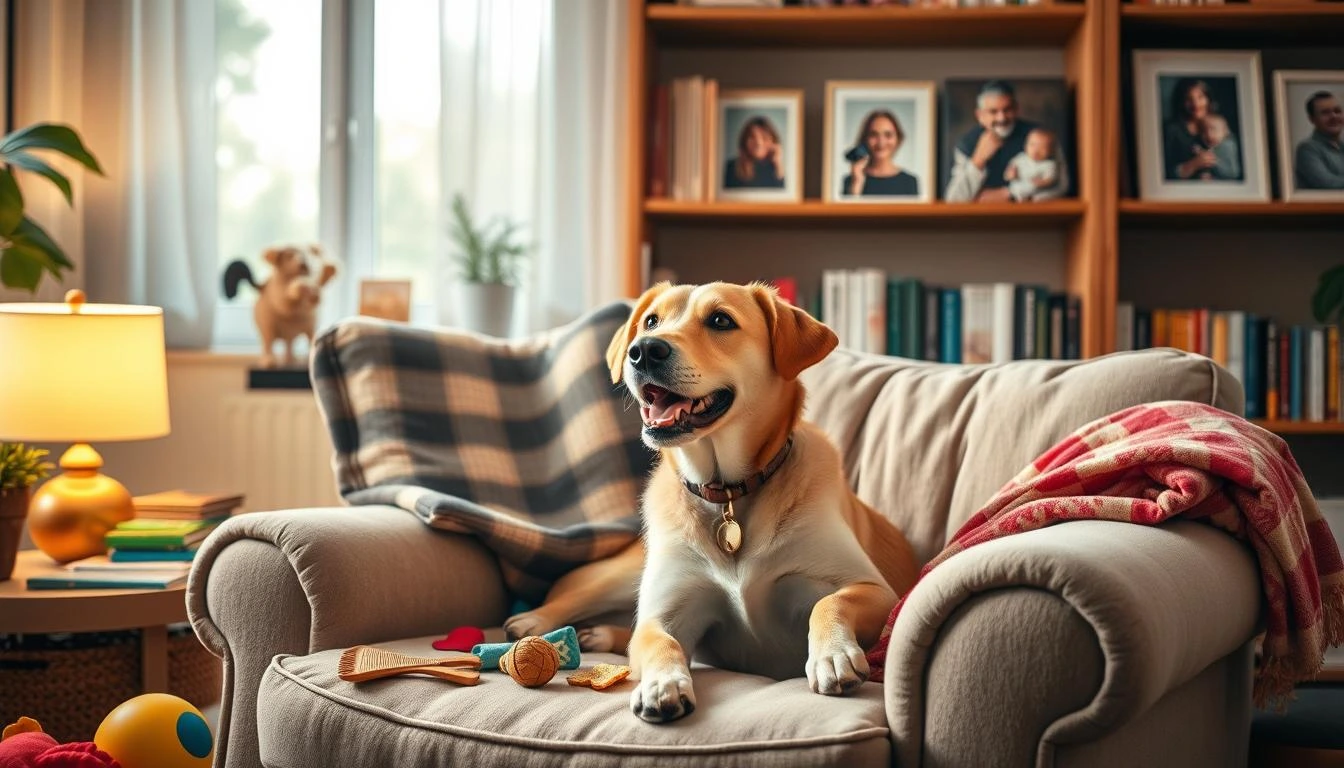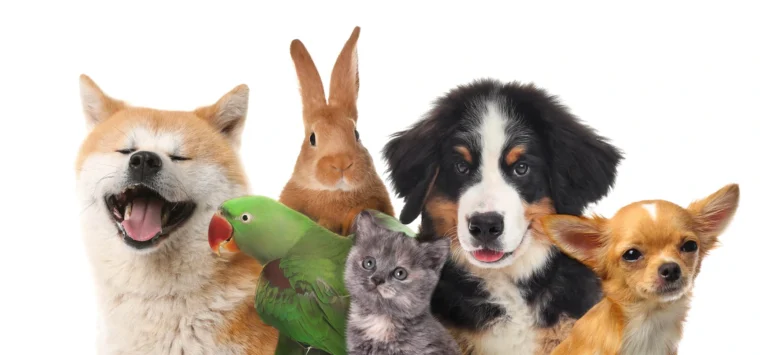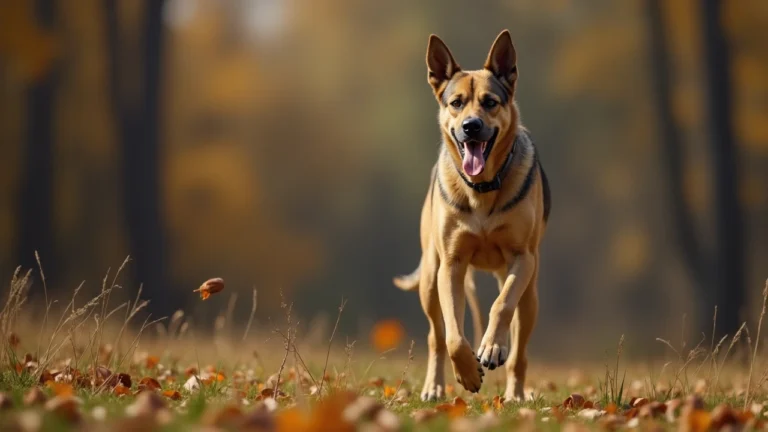Senior Pet Safety Tips
Introduction: Senior Pet Safety Tips
As your furry friend gets older, their needs change. It’s important to take extra steps to keep them comfortable and safe. You want to give them the best life possible, and with the right advice, you can.
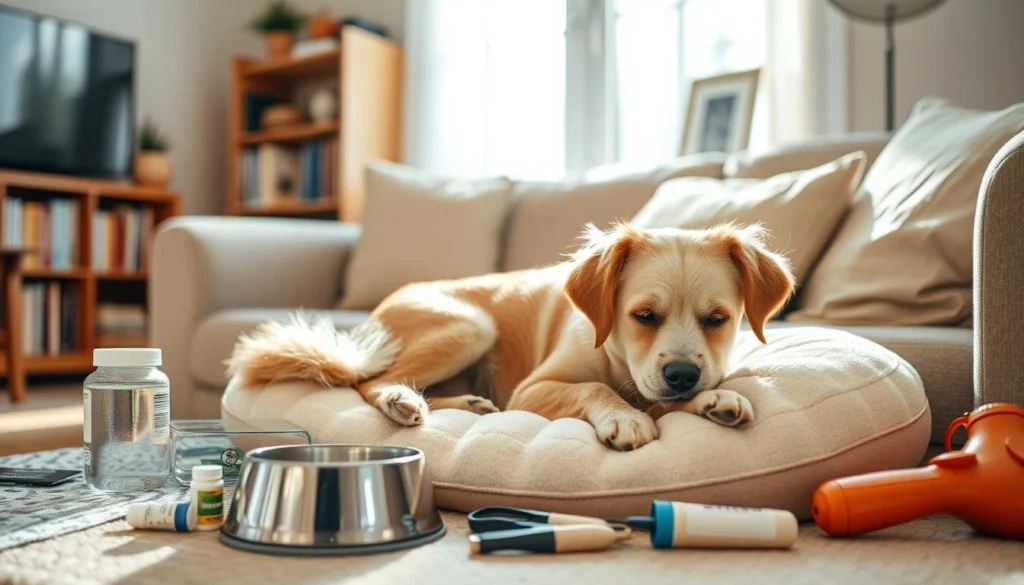
Creating a safe and caring home is key to your senior pet safety tips. This means making changes at home and watching their health and diet. By following some simple tips, you can greatly improve their life.
We’ll look at different ways to care for your aging pet. You’ll get valuable insights and practical tips to keep them happy and safe.
Understanding the Changing Needs of Senior Pet Safety Tips
Senior pets face physical and mental changes that need special care. As a pet owner, knowing these changes is key to giving your aging friend the best life.
When Is a Pet Considered “Senior”?
The age at which a pet is called senior varies. It depends on breed, size, and health. Smaller dogs often live longer, up to 15 years or more. Cats are usually senior, around 10 to 12 years old.
Common Age-Related Changes in Dogs and Cats
As pets age, they face many changes. These include reduced mobility, sensory loss, and brain decline. Older dogs might get arthritis, making it hard to move. Cats may lose their vision or hearing.
Signs Your Pet Is Entering Their Golden Years
Knowing when your pet is aging is crucial. Look for gray fur, weight changes, and sleep pattern shifts. Also, watch for changes in behavior or activity.
By understanding and acting on these signs, you can greatly improve your senior pet’s life.
Creating a Safe Home Environment for Elderly Pets
Your home can be a danger zone for senior pets. But making a few changes can greatly reduce these risks. As pets get older, their bodies and senses weaken. This makes them more likely to have accidents.
Preventing Slips and Falls
Slipping and falling on smooth floors is a big risk for elderly pets. To stop this, put non-slip mats or rugs in places where your pet often slips.
Temperature Control for Older Pets
Older pets often struggle to keep their body temperature right. Make sure your home is at a comfy temperature. You might also want to use a heated bed or cooling pad for your pet’s comfort.
Accessible Sleeping and Resting Areas
It’s key to have comfy and easy-to-reach sleeping spots for elderly pets. Here are some good options:
Orthopedic Bed Options
Orthopedic beds can ease joint pain and discomfort. Look for beds with foam or memory foam for the best comfort for your senior pet safety tips.
Ideal Placement in Your Home
Put your pet’s bed in a quiet, easy spot. Stay away from drafts or extreme temperatures.
| Safety Measure | Benefit | Implementation Tip |
| Non-slip mats | Prevents slips and falls | Place in high-traffic areas |
| Orthopedic beds | Relieves joint pain | Choose beds with supportive foam |
| Temperature control | Maintains comfort | Use heated beds or cooling pads |
By taking these simple steps, you can make your elderly pet’s life better. They’ll stay safe and comfy in their home.
Essential Senior Pet Safety Tips
As your pet ages, keeping them safe is crucial. Senior pets need extra care to stay healthy. There are key areas to focus on.
Identification and Microchipping Importance
Proper identification, like microchipping, is key if your pet escapes. Ensure your pet’s microchip info is current. Also, use a collar with tags that have your contact details. This is a vital safety tip for older pets.
Supervision During Outdoor Activities
Watching your senior pet outside is important to prevent accidents. Know their limits and avoid dangerous places. This advice helps keep your pet safe.
Emergency Preparedness for Aging Pets
Being ready for emergencies is vital for older pets. You need a plan and the right supplies.
Creating a Pet First Aid Kit
A pet first aid kit should have bandages, antiseptic wipes, and any needed medications. Knowing emergency steps can save time. Include a pet first aid guide too.
Have emergency contact numbers ready, like your vet and a nearby animal hospital. This info is crucial in emergencies. Following these tips ensures your pet’s safety and well-being.
By focusing on these areas, you can greatly improve your senior pet’s safety. This aligns with advice for senior pet wellness.
Monitoring Your Senior Pet’s Health
As your pet ages, it’s key to watch their health closely. Regular vet visits can spot problems early. This way, your pet gets the care they need quickly.
Daily Health Check Routine
Creating a daily health check is essential. It helps catch changes in your pet’s behavior, appetite, or looks. Look for signs like discharge, gum color changes, or unusual lumps.
Tracking Changes in Behavior and Habits
Keep an eye on your pet’s behavior and habits. Note any changes in appetite, water intake, or energy. Also, watch for changes in elimination habits or signs of pain.
When to Contact Your Veterinarian Immediately
It’s important to know when to call the vet. Severe symptoms like breathing trouble, seizures, or severe pain need immediate help. Also, watch for vomiting, diarrhea, or lethargy.
Using Technology to Monitor Senior Pets
Technology can offer insights into your pet’s health. Devices like activity trackers or cameras track daily activities. This info helps your vet make better plans for your pet’s care.
By following these tips, you can keep your aging pet healthy and happy. Make older pet care a part of your daily routine.
Nutrition and Hydration for Aging Pets
Proper nutrition and hydration are key for your senior pet’s health. As pets age, their dietary needs change. It’s important to adjust their nutrition plan to keep them healthy and happy.
Age-Appropriate Diet Choices
Choosing the right food for your senior pet is crucial. Senior pet foods address age-related issues like weight gain and joint health. Look for foods high in protein, moderate in fat, and low in carbs. Always consult with your vet to find the best diet for your pet.
| Nutrient | Importance for Senior Pets | Food Sources |
| Protein | Maintains muscle mass | Chicken, Fish, Eggs |
| Omega-3 Fatty Acids | Supports joint health | Salmon, Sardines, Flaxseed |
| Fiber | Aids digestion | Vegetables, Whole Grains |
Managing Weight in Senior Pets
Managing your senior pet’s weight is key to prevent obesity-related health issues. Regularly check their weight and adjust their diet as needed. Low-impact exercise also helps in weight management.
Ensuring Proper Hydration
Keeping your senior pet hydrated is vital for their health. Dehydration can lead to serious health problems like kidney disease and urinary tract infections.
Water Station Accessibility
Ensure your pet always has access to fresh, clean water. Place their water bowls in easy-to-reach locations, even for pets with mobility issues.
Encouraging Water Intake
Some pets may not drink enough water. Make water more appealing by using water fountains or adding a bit of low-sodium broth to their water.
Supplements for Senior Pet Health
Certain supplements can support your senior pet’s health, like joint supplements and omega-3 fatty acids. Always consult with your vet before adding supplements to your pet’s diet to ensure they are safe and necessary.
Safe Exercise and Activity Guidelines for Senior Dogs and Cats
As your dog or cat ages, it’s key to change their exercise routine. This helps prevent injuries and keeps them healthy. Regular activity keeps them mobile, manages weight, and lowers disease risks
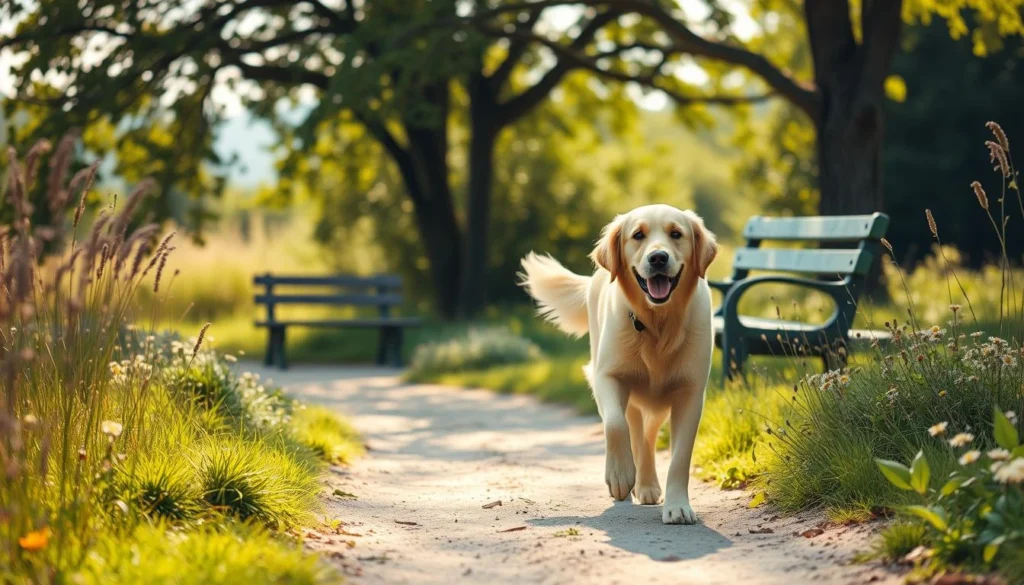
Low-Impact Exercise Options for Dogs
Senior dogs do well with low-impact exercises like short walks and gentle play. Swimming is also great. These activities keep their joints healthy without too much strain.
You can also try hide-and-seek or scent work. These games keep their minds sharp.
Appropriate Play Activities for Senior Cats
Senior cats need regular play too, but it’s different from dogs. Use feather toys, laser pointers, or interactive toys for fun. This encourages them to move without getting too tired.
Adjusting Activity Levels Appropriately
Adjust your pet’s exercise based on their age, health, and abilities. If they have health issues or pain, talk to your vet. They can help find the best exercise plan.
Signs of Exercise Intolerance
Watch for signs of intolerance during exercise, like panting or limping. If you see these, stop right away. Then, talk to your vet about what to do next.
By following these tips and watching your senior pet’s needs, you can keep them happy and healthy. They’ll enjoy their golden years with you.
Mobility Assistance and Support
Helping your elderly pet stay mobile is key to their happiness. As pets get older, they may struggle to move due to arthritis or joint pain. It’s important to provide the right help to keep them independent and healthy.
Helpful Tools and Equipment for Senior Pet Safety Tips
There are many tools and equipment to help pets with mobility problems. These include:
| Tool/Equipment | Description | Benefit |
| Ramps and Steps | Make it easy for pets to get to high places like beds or cars. | Less strain on their joints. |
| Harnesses and Slings | Help pets stay stable and confident while walking or standing. | Boosts their stability and confidence. |
| Wheelchairs and Carts | Allow pets to move around even with severe mobility issues. | Keeps them mobile and independent. |
Managing Arthritis and Joint Pain
It’s crucial to manage arthritis and joint pain to improve your pet’s mobility. This can be done with medication, physical therapy, and alternative treatments like acupuncture or laser therapy. Always talk to your vet to find the best plan for your senior pet’s safety tips.
Adapting Your Home for Limited Mobility
Changing your home to senior pet safety tips can prevent accidents and injuries. Simple changes include rearranging furniture for clear paths, using non-slip mats, and making sure they can easily get to food, water, and rest spots.
Mental Stimulation and Cognitive Health
As your pet ages, it’s vital to focus on their mental health. This ensures they stay happy and engaged. Mental stimulation is key for senior pet wellness, keeping their minds active and healthy.
Brain Games for Senior Pet Safety Tips
Brain games are great for challenging your senior pet’s mind. Activities like hide-and-seek, puzzle toys, and scent games are excellent. They provide mental stimulation and help keep their cognitive function sharp. These senior pet safety tips can be tailored to fit your pet’s abilities and interests.
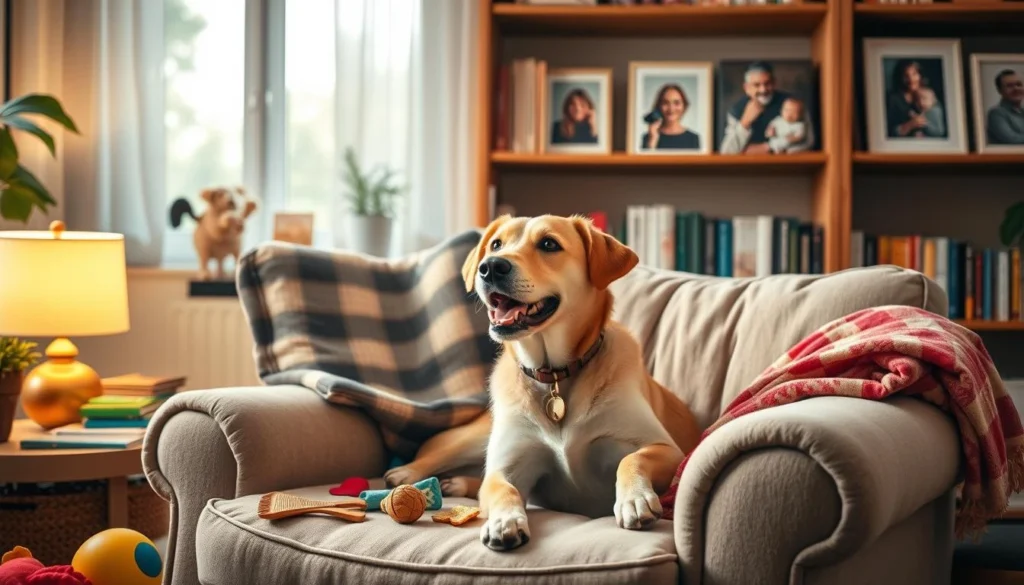
Recognizing Signs of Cognitive Decline
Watching for signs of cognitive decline in your senior pet is crucial. Look out for confusion, disorientation, or changes in behavior. Early detection lets you adjust their care and offer the right support. Keeping a routine and reducing stress can help manage symptoms of cognitive decline.
Maintaining Routine and Reducing Stress for Senior Pet Safety Tips
A consistent daily routine can reduce stress and anxiety in senior pets. A predictable schedule for feeding, exercise, and play gives them a sense of security. This is a vital part of senior pet wellness advice, supporting their overall well-being. Senior Pet Safety Tips
Enrichment Activities for Senior Pet Safety Tips
Enrichment activities like sensory stimulation and social interaction are also important. Providing a variety of experiences and environments keeps your older pet engaged. This is a key part of older pet care tips.
Traveling and Outdoor Safety with Senior Pets
Keeping your senior pet safe while traveling and enjoying the outdoors is key. As pets get older, their needs change. It’s important to adjust how you travel and enjoy activities with them.
Car Travel Considerations
Traveling by car with your senior pet needs senior pet safety tips. Choose a comfy, well-ventilated carrier or harness to keep them safe. Make sure to stop often for them to stretch and drink water.
For senior dogs, think about their joint pain. Try to avoid too much activity during the trip. For senior pet safety tips
Accommodations for Elderly Pets
When traveling, pick pet-friendly places to stay. Look for hotels or vacation rentals that welcome pets. Make sure the place is cozy and safe for your aging pet.
Weather Precautions for Senior Pet Safety Tips
Watch the weather when taking your senior pet outside. Extreme temperatures can be hard on older pets. Keep them out of the cold or heat and always provide shade and water.
Preparing for Veterinary Visits
Before you go, check that your pet’s vaccinations are current. Talk to your vet and have your pet’s medical records and any needed meds ready. This ensures they get the best care if an emergency happens. It’s important for senior pet safety tips
Conclusion: Embracing Your Pet’s Golden Years
As your pet ages, it’s important to adjust their care to fit their new needs. Following the senior pet safety tips in this article can help your senior pet live comfortably and happily. Simple changes to their space, food, and activity can greatly improve their life.
Using senior pet safety tips for aging pets, like watching their health and keeping them mentally active, can strengthen your bond. It also creates lasting memories. Being proactive and caring for your pet’s needs makes their golden years special.
Creating a safe, loving space is key to helping your senior pet thrive. Focus on their physical and emotional well-being. Cherish the time you have together.
FAQ
What are some common age-related changes in senior pets?
Senior pets may move less, lose their senses, and think less clearly. They might also get gray fur, change weight, or sleep differently.
How can I create a safe home environment for my elderly pet?
Make your home safe by using non-slip mats or rugs. Keep the temperature right and have easy places for them to rest, like orthopedic beds.
Why is identification and microchipping important for senior pets?
ID and microchipping are key if your pet gets lost. They help bring your pet back to you fast and safely.
How often should I monitor my senior pet’s health?
Check your pet’s health often to catch problems early. Daily checks can spot changes in behavior, appetite, or health.
What are some age-appropriate diet choices for senior pets?
Pick a diet that fits your pet’s age. Talk to your vet to find the best food for your pet’s age, breed, and health.
How can I ensure my senior pet stays hydrated?
Keep your pet hydrated by making water easy to find. Use water stations and consider a water fountain to encourage drinking.
What are some low-impact exercise options for senior dogs?
Short walks or gentle play are good for senior dogs. Adjust how much they exercise based on their health and watch for signs of too much.
How can I support my senior pet’s mobility?
Use tools like ramps or harnesses to help pets with mobility issues. Treat arthritis and joint pain to improve their life.
What are some ways to provide mental stimulation for my senior pet?
Play brain games and enrichment activities with your pet. Keep a routine and use calming aids to support their mental health.
What precautions should I take when traveling with my senior pet?
Think about your pet’s needs when traveling. Ensure their comfort and safety in the car, choose pet-friendly places, and protect them from the weather.

